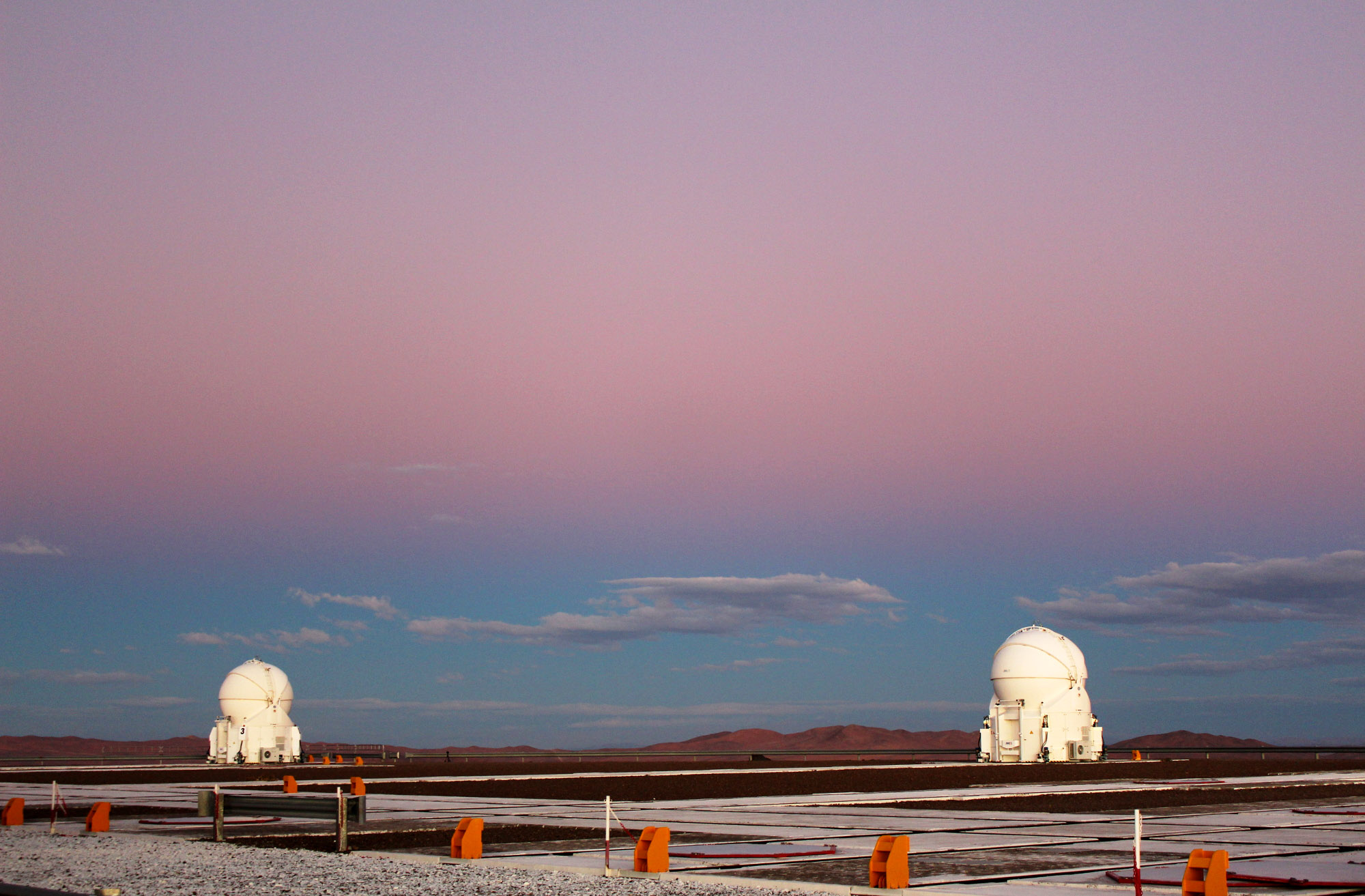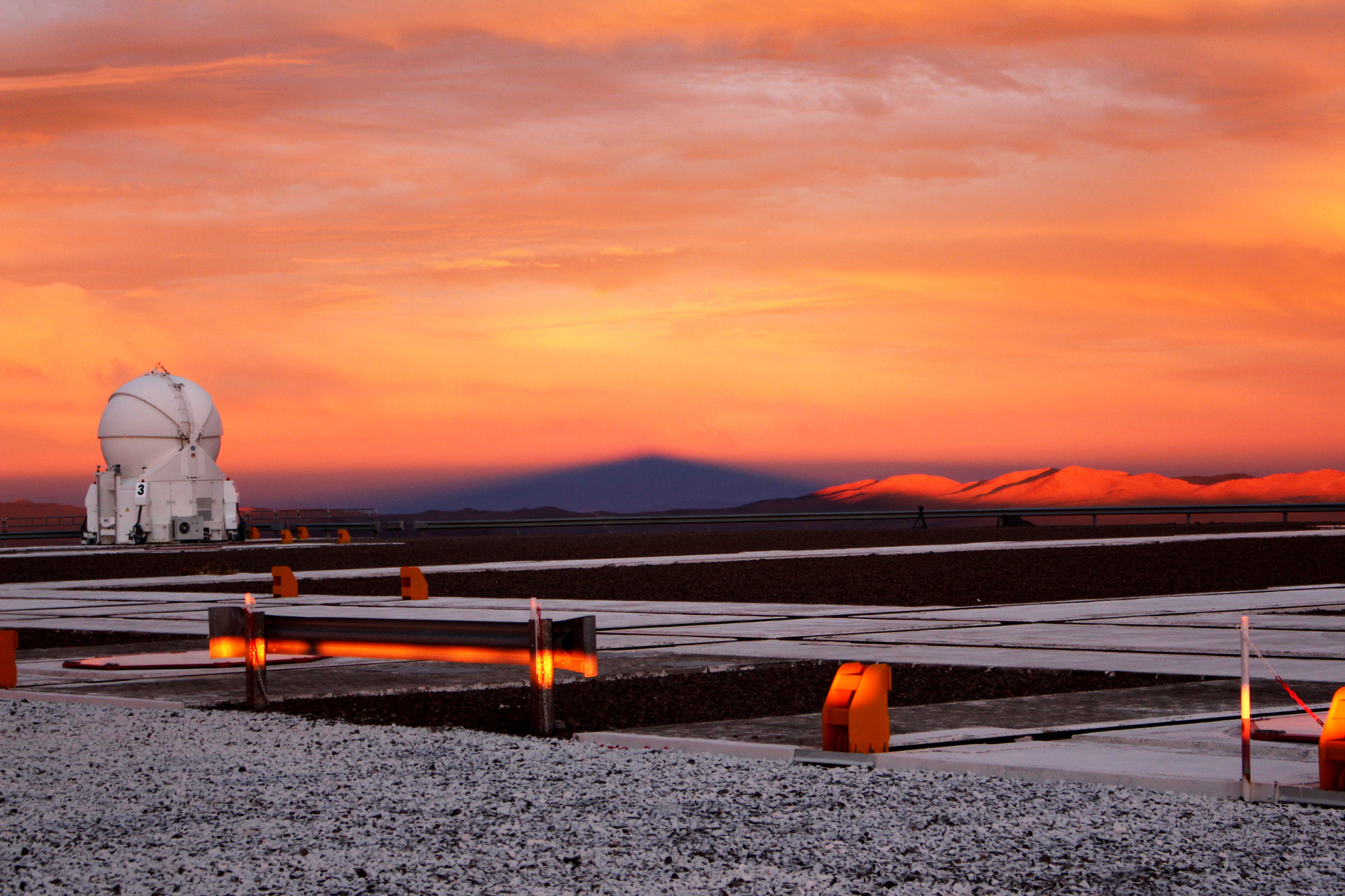'Belt Of Venus' Glows Over Paranal Observatory

A beautiful atmospheric phenomenon descended over the ESO’s Very Large Telescope (VLT) last week, giving the participants of the inaugural #MeetESO social media event an evening treat.
#MeetESO: Visiting the World's Most Powerful Telescopes
The "Belt of Venus" occurs just after sunset on cloudless evenings and, depending on atmospheric conditions, a reddish glowing band may appear in the anti-sunward direction. The glow itself is caused by back-scattered sunlight bouncing off dust particles suspended high in the atmosphere. Below the diffuse glow is the Earth's shadow above the horizon. To observe it, you just need to have the setting sun at your back and face the opposite direction as sunset ends and dusk commences.
ANALYSIS: Mercury Transit: How We Scaled the Cosmos
On May 9, after the transit of Mercury dazzled the world, Discovery News was attending the #MeetESO event atop Cerro Paranal, a 2,664 meter (8,740 ft) high mountain in the Atacama Desert in northern Chile on the platform of the VLT. As the sun set over the desert clouds below, the Belt of Venus rose over the VLT's auxiliary telescopes behind us as the observatory's 4 main 8.2 meter telescope domes opened.
The VLT is one of the most complex and advanced optical telescopes on the planet. Composed of 4 primary telescopes and 4 "auxiliary" 1.8 meter telescopes, the entire system can work as individual telescopes or in groups as the VLT Interferometer (VLTI). Interferometers use multiple telescopes to combine their observing power, mimicking a single, larger telescope. And on Paranal, the VLTI (including the VLT Survey Telescope) sit atop a huge concrete platform under some of the clearest skies on the planet.
ANALYSIS: Very Large Telescope Fires-Up Awesome Laser System
Breaking space news, the latest updates on rocket launches, skywatching events and more!
As a bonus, one of the main telescopes has now been fitted with four adaptive optics lasers, to help remove atmospheric turbulence from observations. You can read more about the VLT adaptive optics system here.
PHOTOS: ALMA: New Jewel of the Atacama Desert
For the entire #MeetESO visit, high winds and (at the site of the Atacama Large Millimeter/submillimeter Array) even blizzards made conditions a challenge. Though clouds descended over Paranal soon after we arrived at the observatory, another incredible sunset view presented itself on May 8. Though the Band of Venus wasn't visible, the deep red sunset cast a dramatic shadow of Cerro Paranal, ending the day on a picture-perfect note:
Originally published on Discovery News.
Ian O'Neill is a media relations specialist at NASA's Jet Propulsion Laboratory (JPL) in Southern California. Prior to joining JPL, he served as editor for the Astronomical Society of the Pacific‘s Mercury magazine and Mercury Online and contributed articles to a number of other publications, including Space.com, Space.com, Live Science, HISTORY.com, Scientific American. Ian holds a Ph.D in solar physics and a master's degree in planetary and space physics.



